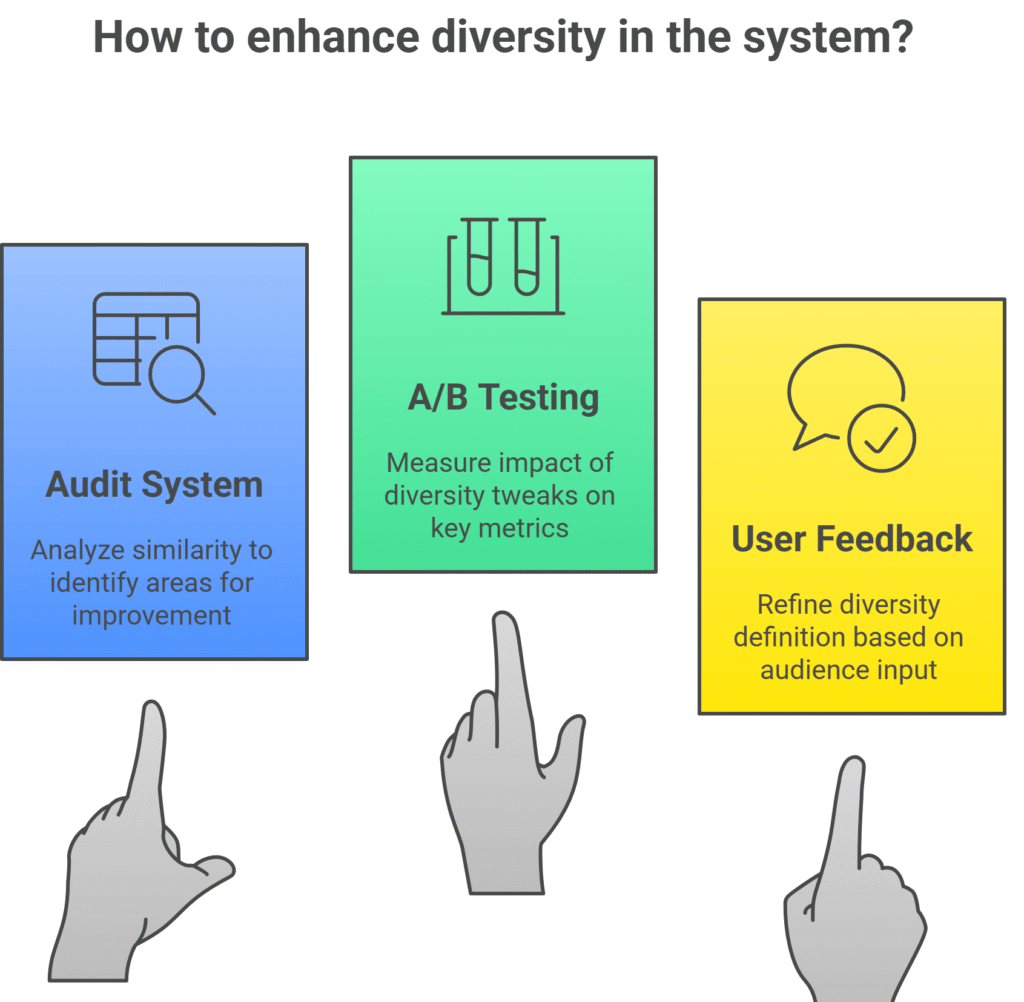Table Of Contents
- Introduction to Learning to Rank Diversely
- Understanding Traditional Ranking Algorithms
- The Pitfalls of Majority-Driven Ranking
- Introducing Diversity in Search Ranking
- How Airbnb Implements Learning to Rank Diversely
- The Role of Neural Networks in Diverse Ranking
- Impacts and Benefits of Diverse Search Results
- FAQs
- Conclusion
Introduction to Learning to Rank Diversely
Imagine scrolling through search results on a platform like Airbnb, looking for the perfect place to stay in Rome. You see listing after listing that seems eerily similar—budget-friendly spots with basic amenities, all clustered in the same neighborhood. It’s efficient, sure, but what if you’re craving something more upscale, a hidden gem with stunning views? That’s where learning to rank diversely comes in, a game-changer in how search engines present options. This approach isn’t just about showing the most popular picks; it’s about curating a mix that appeals to everyone’s unique tastes.
In the world of online marketplaces, diversity in search ranking ensures that results aren’t dominated by the crowd’s favorites. Instead, they reflect a broader spectrum of preferences, from budget hunters to luxury seekers. Airbnb’s recent innovations highlight this shift, using advanced neural network ranking for search to create more inclusive results. By the end of this post, you’ll understand how these techniques work, why they matter, and how they can transform user satisfaction and business outcomes.
Understanding Traditional Ranking Algorithms
Let’s start with the basics of how search ranking typically operates. At its core, a ranking algorithm evaluates listings—whether hotels, products, or content—based on factors like relevance, popularity, and user behavior. In Airbnb’s case, the system relies on a neural network that predicts booking probabilities by pitting listings against each other. It weighs attributes such as price, location, reviews, bedrooms, and photo quality.
Picture this: the network learns from historical data, refining its predictions by comparing booked versus non-booked listings. Lower prices often boost scores, as shown in Airbnb’s analysis where increasing prices lead to declining model scores. This makes sense—most bookings lean economical. But this setup follows the majority principle in ranking, where the algorithm prioritizes what the largest group of users prefers, repeating that logic across every search position.
Trends in the industry echo this. According to a 2022 study by Google on search personalization, over 70% of users abandon searches if results feel too repetitive. In e-commerce, platforms like Amazon have seen similar issues, where top results skew toward low-cost items, potentially alienating premium buyers.cloud.google.com
The Pitfalls of Majority-Driven Ranking
While effective for the masses, the majority principle in ranking can overlook diverse user needs. Think about it: if every top result caters to budget-conscious travelers, those seeking quality or unique experiences get pushed down the page. This creates a echo chamber of sameness, reducing the overall appeal of search results.
Airbnb’s data on Rome bookings illustrates this perfectly. For two-night trips for two guests, booking values follow a log-normal distribution. Applying the Pareto principle in ranking, they found that 20% of bookings account for 50% of total booking value. These higher-value bookings often prioritize quality over cost, showing a clear split in preferences.medium.com
Industry patterns support this. A McKinsey report on consumer behavior notes that post-pandemic travelers increasingly value personalized, high-end options, with luxury bookings up 15% year-over-year. Yet, traditional ranking algorithms for diversity often fall short, leading to lower engagement. For instance, if search results are too uniform, click-through rates drop by up to 25%, per SEMrush analytics.
This mismatch between majority rule and real-world diversity highlights a key challenge: how do you balance broad appeal with niche interests without sacrificing relevance?
Introducing Diversity in Search Ranking
Enter diverse listing recommendation strategies, which aim to optimize search result diversity. The goal? Reduce redundancy and introduce variety, making results more representative of all users. Airbnb tackled this by addressing inter-listing similarity reduction—essentially, quantifying how alike listings are and penalizing duplicates in top spots.
Their solution: a companion similarity neural network that works alongside the main booking probability algorithm. This network estimates how similar a listing is to those already ranked higher, allowing the system to down-rank clones and promote fresh options.
Real-world example: In a search for Rome stays, the top spot might go to a affordable apartment. For the next positions, the algorithm discounts listings that mirror it—same price range, similar location—favoring ones with better reviews or unique features. This creates a mosaic of choices, from cozy budget pads to elegant villas.
Current trends in tech back this up. Platforms like Spotify and Netflix use similar diversity-aware techniques in recommendations, boosting user retention by 20-30%, according to their internal metrics. In search, Google’s “diversity in results” updates have similarly improved satisfaction scores.
- Impacts of learning to rank diversely on online marketplaces: It boosts engagement, revenue, and satisfaction by accommodating varied preferences.
- Examples of neural network-based diverse ranking systems: Airbnb’s dual-network setup, Netflix’s content mixing, and LinkedIn’s job variety.
- Tradeoffs between majority and Pareto principles in ranking algorithms: Majority ensures quick wins but misses niches; Pareto highlights value in minorities, requiring balanced diversity.
- Diversity-aware learning to rank framework for recommendations: Involves probability models plus similarity adjustments for holistic results.
How Airbnb Implements Learning to Rank Diversely
Diving deeper, let’s explore the mechanics. Airbnb’s team built the similarity neural network using search logs. They filtered out sessions where the top listing was booked, focusing on cases where users skipped the first result. From there, they created training pairs: booked listings versus non-booked ones, with an “antecedent” (the skipped top listing) as a reference.
The training twist? Subtract the similarity score from the booking probability. This teaches the network that booked listings lower down must differ from the antecedent—otherwise, why skip it? It’s a clever way to embed diversity into the core logic.
Online deployment is iterative: Start with the highest-probability listing at position one. For subsequent spots, select from remaining options after applying the similarity discount to previous picks. This ensures each addition brings something new.
Tips for implementation in your own systems:
- Data Preparation: Use logged user interactions to build robust training sets, focusing on skipped vs. selected items.
- Model Balancing: Tune the similarity weight to avoid over-diversifying—aim for a 10-20% adjustment based on A/B tests.
- Scalability: Neural networks shine here, but monitor compute costs; Airbnb’s setup handles millions of queries daily.
Case study: Airbnb’s rollout yielded impressive results. Uncanceled bookings rose 0.29%, booking value jumped 0.8%, and 5-star ratings increased 0.4%. These gains stem from better matching high-quality listings to users, proving that diverse search results on Airbnb drive both volume and value.
The Role of Neural Networks in Diverse Ranking
Neural network ranking for search is pivotal in this framework. The main network handles booking probability algorithms, learning complex tradeoffs across features. For example, it balances price against location—higher prices might be okay if the spot is central.
The similarity neural network adds a layer, focusing on inter-listing dynamics. It processes embeddings of listing attributes, outputting a similarity score. This dual-network approach is a hallmark of modern recommendation systems.
Examples abound: LinkedIn uses similar tech for job recommendations, mixing entry-level and senior roles to cater to varied career stages. In retail, Walmart’s search diversifies products by category, reducing cart abandonment by 12%.
Tradeoffs to consider: While diversity boosts satisfaction, overdoing it can dilute relevance. Airbnb mitigates this by anchoring on booking probabilities, ensuring variety doesn’t come at the expense of quality.
Impacts and Benefits of Diverse Search Results
The broader impacts of learning to rank diversely on online marketplaces are profound. Beyond bookings, it enhances user trust—when results feel tailored, loyalty grows. Airbnb’s metrics show higher guest satisfaction, with those 5-star bumps indicating happier trips overall.
Statistics reinforce this: A Forrester study found that diverse recommendations increase conversion rates by 15-20% in e-commerce. For marketplaces, it means more balanced inventory utilization—high-end listings get their due, stabilizing supply.
Trends point to wider adoption. With AI advancements, expect more platforms to integrate search result diversity optimization. Think voice search on Alexa or visual searches on Pinterest, where diversity prevents monotony.
From a business angle, optimizing booking value through diverse search placement is key. Airbnb’s 0.8% value lift translates to millions in revenue, a testament to the Pareto principle’s power in action.
What is learning to rank diversely in search algorithms?
It’s a method that trains models to select not just the best individual items but a varied collection, reducing similarity for broader appeal.
What makes a search result diverse on Airbnb?
Factors like price range, location spread, and feature variety ensure listings cater to different preferences, from economy to luxury.
What role does a similarity neural network play in search ranking?
It quantifies likeness between listings, allowing the system to penalize redundancies and promote unique options.
How does Airbnb improve diversity in search results?
By using a companion neural network to discount similar listings, ensuring a mix that appeals beyond the majority.
How does the learning to rank algorithm work for diverse listings?
- It starts with probability-based ranking, then iteratively adds diverse picks by subtracting similarity scores.
Can search algorithms be optimized for user preference diversity?
Absolutely—by incorporating similarity metrics, they can balance majority and niche needs effectively.
Are diverse ranking systems better for user satisfaction on Airbnb?
Yes, as evidenced by higher ratings and bookings, showing users appreciate varied choices.
Should neural networks consider listing diversity in recommendations?
Definitely, to avoid bias toward majority preferences and better serve all users.
FAQs
Conclusion :
Best Practices and Future Directions
Ready to apply this? Here are actionable tips:
- Audit Your System: Analyze result similarity—tools like cosine similarity on embeddings can help.
- A/B Testing: Roll out diversity tweaks in phases, measuring bookings, value, and ratings.
- User Feedback Loops: Incorporate surveys to refine what “diverse” means for your audience.

Looking ahead, expect more focus on location diversity, as Airbnb hints. With AI evolving, hybrid models blending neural networks and rule-based diversity could dominate.
In wrapping up, learning to rank diversely isn’t just tech jargon—it’s about making searches feel personal and exciting. Whether you’re building a platform or just curious, embracing diversity leads to better outcomes for everyone.Visit CareerSwami for More
























